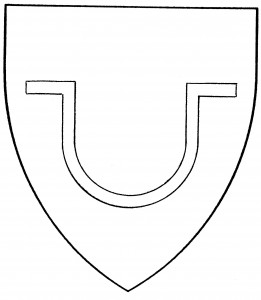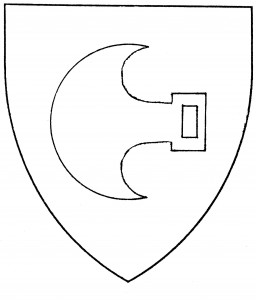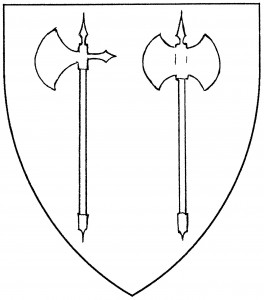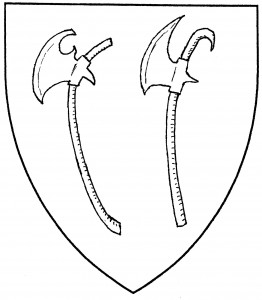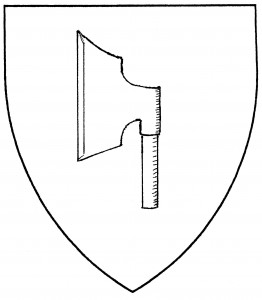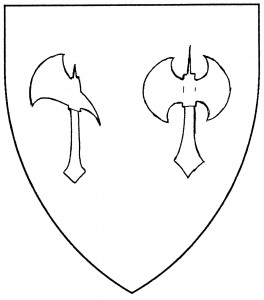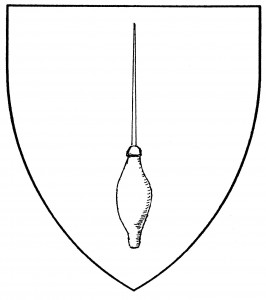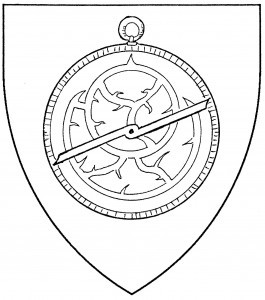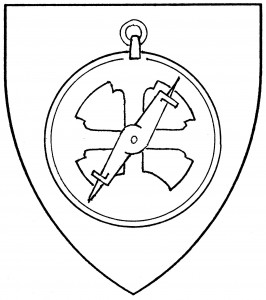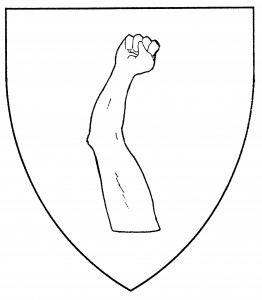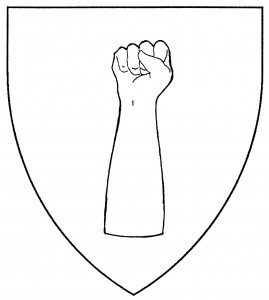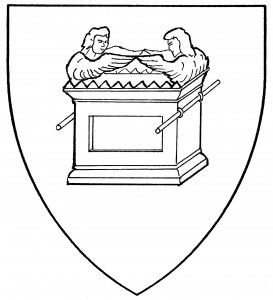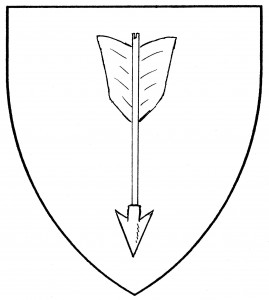
Arrow (Period)
An arrow is a feathered shaft, shot from a bow or crossbow as a missile. It’s found in the allusive arms of Archer, 1320 [DBA1 10].
The arrow’s default orientation is palewise, point down. When fesswise, its default orientation is with point to sinister; this is sometimes blazoned explicitly. An “arrow proper” has a brown shaft and black head, with its feathers, or fletching, to be specified; the blazonry term for the fletching is “flighted”, e.g., “an arrow gules flighted azure.” The head and feathers are drawn greatly exaggerated in size.
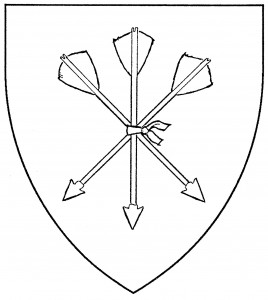
Sheaf of arrows (Period)
A “sheaf of arrows” is a bundle of three arrows, two in saltire and one palewise, bound where they cross.
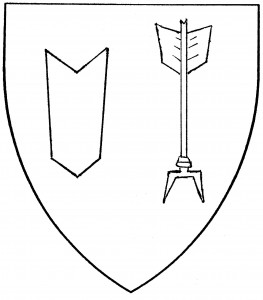
Japanese arrow notch (probable SFPP); forked arrow (Period)
Of the variant forms of arrow in medieval armory, the most common is the “bird-bolt”, with a wide blunt tip; it’s also termed a “bird-blunt” or a “boson”. It’s a period charge, dating from c.1285, in the canting arms of Bozon [ANA2 211]. Somewhat rarer is the “forked arrow”, with a two-pronged point designed to slash, rather than pierce; it’s found in the arms of Prunnster, c.1600 [BSB 307:620], but may be more familiar as a charge found in Japanese Mon [Hawley 53].
Japanese Mon have proven the basis for several arrow-like charges in Society heraldry. In addition to the forked arrow, supra, we have the “Japanese arrow notch” (yahaza), as found in the Mon of Saiki [Hawley 54]: this is the section of the shaft with the feathers and nock, drawn in a stylized form.
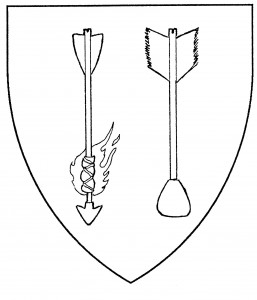
Fire-arrow (Accepted); boson (Period)
Several variant types of arrows are unique to Society armory: A “fire-arrow” is an arrow with pitch-soaked cloth wrapped near the point, and enflamed. A “quarrel” is a short arrow with feathers down its length; it’s used in crossbows, rather than longbows. A “whistling arrow” is a 13th C. Mongolian artifact, with holes in the point to create a whistle as the arrow flies; as a non-European artifact, its use is considered a step from period practice.
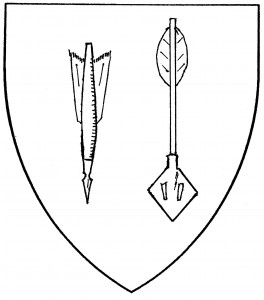
Quarrel (Accepted); Mongolian whistling arrow (SFPP)
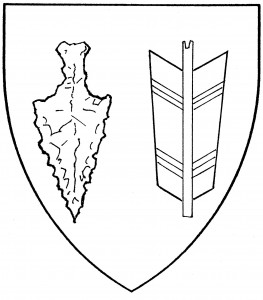
Elf-bolt (Accepted); arrow fletching (Accepted)
An “arrowhead”, without qualification, is drawn simply as a generic barbed point; it’s a usual English term for the rogacina of Polish armory. An “elf-bolt” is a stone arrowhead, chipped and flaked; prehistoric specimens found by the ancients were attributed to the Little People. The “arrow fletching”, the feathered end of the shaft, is found in the Mon of Hatori Masanari, d.1596 [Hawley 54]; but as such fletchings are indistinguishable from European arrow fletchings, they are blazoned without qualification.
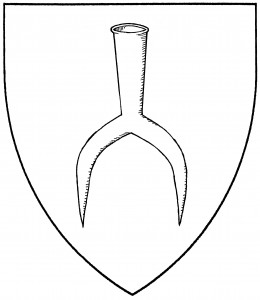
Crescent-shaped arrowhead (Period)
Finally, the “crescent-shaped arrowhead” is a forked arrowhead, with two points. It’s a period artifact; the charge (or one very similar) is found in the arms of Motringer, mid-16th C. [NW 36]. The illustration is taken from Motringer.
For related charges, see pheon, spearhead.
The Archery Marshallate bears: Sable, two arrows in saltire Or.
The Order of Artemis, of the East, bears: A sheaf of arrows azure.
Rumil Fletcher bears: Azure, three arrows Or.
Loran Redbow bears: Azure, three fire-arrows bendwise sinister in bend argent, enflamed proper.Styrbjorg Ulfethnar bears: Argent, a demi-wolf salient proper, charged upon the shoulder with an elf-bolt argent, and issuant from a valknut gules.
Evan y Helfarch ap Llewellyn bears: Erminois, on a pale gules in chief two bird blunts in saltire surmounted by an arrow inverted Or, a base counterchanged.
Kuji Ka Onimusashi bears: Vert, a sheaf of forked arrows inverted surmounted by a three-pronged vajhra fesswise Or.
Daimon Isamu bears: Argent, two axes, blades to center, between their handles two Japanese arrow notches in saltire, all gules.
Karin Ollesdotter av Augvaldsnes bears as a badge: In fess a whistling arrow inverted vert sustained by a seahorse gules.
Rees of Northwoods bears: Quarterly azure and gules, four arrowheads inverted argent.
Walkelin Montgomery bears: Argent, three arrow fletchings in pall, shafts to center, a bordure sable.
